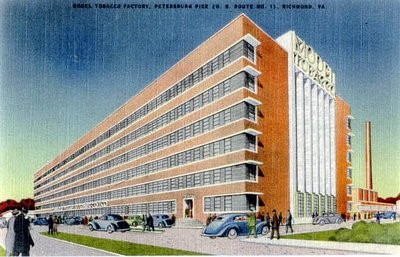Urban renewal. Who can be against it? Who opposes renewal, or rebirth, or renaissance of our urban areas?
The phrase “urban renewal” is semantically loaded- it conjures mental images of a dying city in need of new life. I imagine a neighborhood filled with dilapidated housing, crime, broken street lights, and few, if any, stores. The promise of renewal- of new homes and shops, of a neighborhood with little crime- who can say no to that?
Or, if urban renewal isn’t your phrase, you might prefer, “the dire need to create more flourishing neighborhoods across the city…” [said by our own Mayor Wilder, via]
Style’s cover article this week, however, provides a cautionary tale about these promises of urban renewal. “The Greatest Place on Earth” details the history of the Fulton community and its demise at the hands of the government.
First, there was the decay of the neighborhood from a complex array of factors: death of the streetcar that formerly terminated in the neighborhood, suburban sprawl, shopping malls, neglect by the city (who admittedly didn’t enforce building codes).
Second, there was the demonizing of the newly-crumbling neighborhood:
In 1966, city leaders had gone so far as to declare Fulton its “worst slum.” City Council commissioned a study looking at options for revitalization.
“Fulton Bottom is, for the most part, an aged and ragged neighborhood wracked by crime and poverty,” the Richmond Times-Dispatch reported in 1969. “Most of its houses are officially classified as dilapidated, and many are considered unfit for human occupancy. Most people, no doubt, regard the East End community as a blot upon the city, a place to shun if possible.”
Third, there’s promises to take care of residents and redevelop the neighborhood:
So its revamped plan called for tearing down Fulton in phases. Some $32 million in federal grants were secured, some of which was intended to help property owners revitalize existing homes that were structurally sound. Fulton residents were to be offered the opportunity to live in the new development as well.
Then there’s the subsequent political reality which sets in after the old neighborhood is torn down:
Despite the plan to phase in the development and preserve some homes, [Richmond Redevelopment and Housing Authority] RRHA wound up demolishing the entire neighborhood using the power of eminent domain. The funding dried up, and the new housing, particularly in the valley, would take more than 30 years to come to fruition.
I’m no libertarian or conservative anti-government republican, nor am I a radical leftist who wants to dismantle every government function. I can, however, learn from Richmond’s history and say with confidence that government promises to help low-income folks are too often worthless.
Fulton and Randolph were both to be redeveloped for its residents more than 30 years ago. Neither is finished today. The gap between the subsidized Blackwell project’s demolition and the beginning of construction (not the completion, mind you) was more than 5 years.
So while Scott Bass’ excellent Style article about Fulton is interesting (much is taken from Seldon Richardson’s also excellent book Built by Blacks: African American Architecture and Neighborhoods in Richmond, VA), I found myself comparing the history of Fulton to the current conversations about demolishing the housing projects.
There are, of course, key differences, most obviously the historic import of the neighborhoods and architecture. But the story is the same- the politicians want to redevelop a low-income neighborhood and make lofty promises to the current residents about creating thriving mixed-income neighborhoods. Then, as was the case with Fulton, Randolph, and Blackwell, those promises are broken, and redevelopment happens incredibly slowly.
One of the greatest critiques I hear from politicians and from Richmond residents about subsidized housing projects is about the “entitlement mentality” of the residents, who supposedly take housing for granted and take no personal ownership of their property and neighborhood.
I would argue that redevelopment schemes like those in Fulton- and like those being floated for the current housing projects- perpetuate that mentality by not adequately involving the residents affected and not adequately taking their concerns into account.
If we truly wish to increase the ownership people take in their housing, we need to make sure we include them in any process that affects them and honor their input.
The blogosphere has been abuzz about the recent charrette process and celebrating public involvement in the planning process. Let’s make that a basic principle of our city- always involve the public – and not let disasters like Fulton’s demolition and painfully slow redevelopment happen again.
Then we need to hold the politicians’ responsible when they fail to take us into account.
